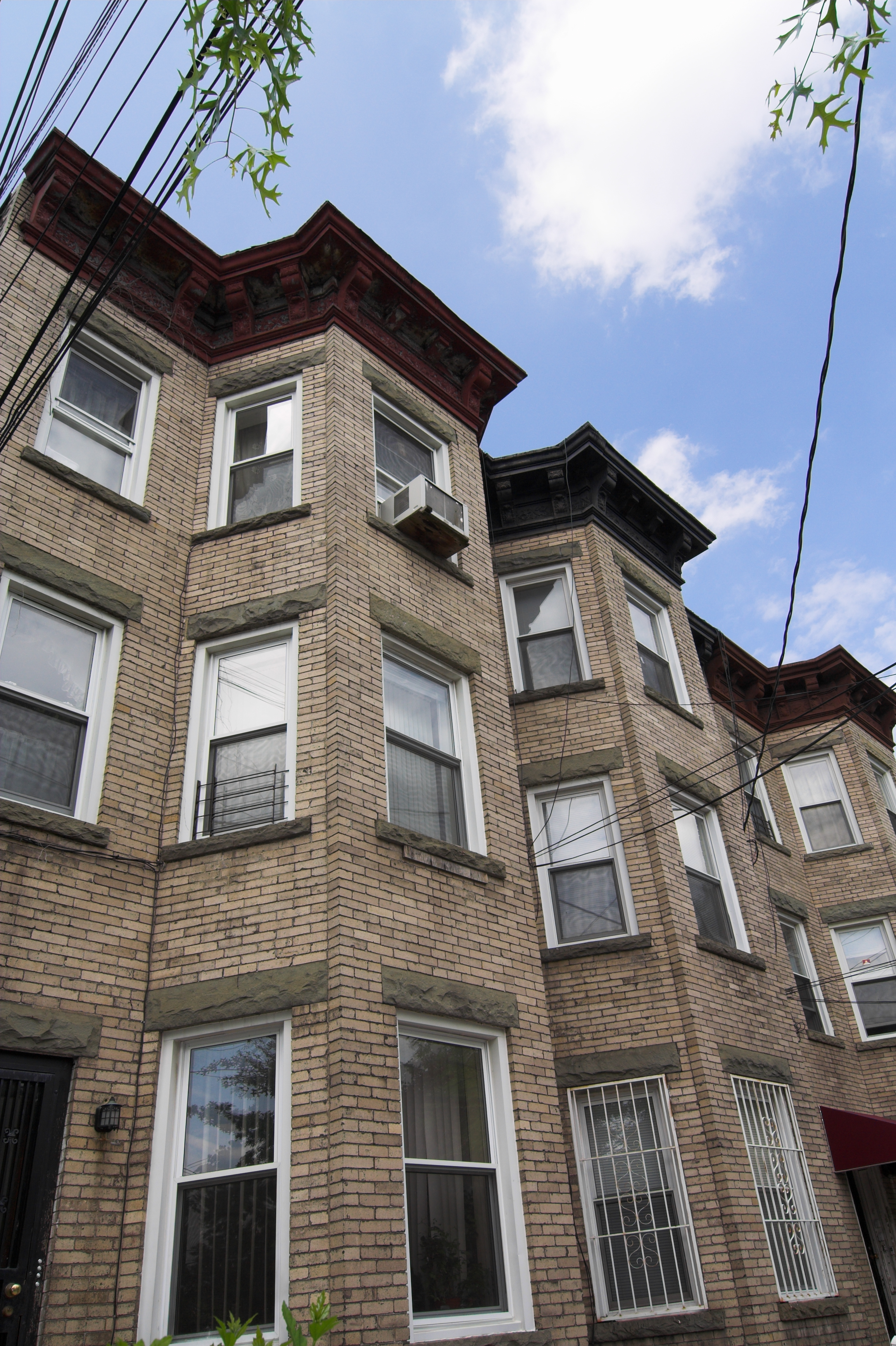Around the world on the outskirts of large cities, affordable housing has often taken the form of tower block apartments, sometimes called “slab farms.” Originally designed for factory workers, these have evolved into immigrant communities, often with isolating effects that limit the opportunities for the residents to move out of poverty and integrate into the established society. As Ontario moves to reduce the local influence on development and to increase the housing supply aggressively, Oakville is accepting new and unfamiliar housing forms. What are the implications of this kind of growth, and what can we learn from the experience of other communities?
Darkness on the Edge of Town (a Bruce Springsteen song) is the title of a talk by Doug Saunders, Globe and Mail International Affairs writer and author of Arrival City, The Myth of the Muslim Tide, and Maximum Canada, in the Compassionate Justice series, held at Eglinton St. George’s United Church in Toronto last weekend. In it, he painted a picture of desolate tenement blocks that are car-dependent, soulless and condemn their inhabitants and their children to impoverished joyless lives, or worse, lives of crime and addiction. He also held out hope that we can learn from these failures and our past successes and create a positive approach to neighbourhood building that will mean opportunity for new Canadians and others striving to join the middle class. At the same time, his prescriptions could even improve the quality of life in existing neighbourhoods.

Mr. Saunders has long focused on the issue of immigration, both in Canada and around the world. Maximum Canada makes the case that sustainable future prosperity for our country needs substantial population growth: a tripling of Canada’s population to more than 100 million by 2030, a position also promoted by the Century Initiative, to which many eminent Canadians have subscribed.
We have mostly recognized that we can’t keep expanding into farmland and nature to build single-family neighbourhoods that add to traffic. In Oakville, the plan has been to increase population by building up along the key arterials and transit corridors, with a goal to reduce the traffic impact of population growth and “preserving the character of existing neighbourhoods.” This last is now under particular criticism, characterized as NIMBYism. Municipal councils, like Oakville’s, are regularly demonized as standing in the way of adding to housing stock, opposing all change, and supporting restrictive zoning that means nothing gets built.
Mr. Saunders suggested that the planning regime in Ontario should account for the desires of those wanting to move into a neighbourhood and those already there. But developers already do that because they must appeal to future residents to sell projects: the market takes care of the desires of future residents. And if projects conform to Provincial Policy, municipalities invariably fail to stop them…though it must be conceded that often a lot of time and money are wasted in the process.
There are currently in the GTA 250,000 units of housing that are fully serviced and permitted by municipal councils that aren’t being built.* Even with these, there will not be nearly enough housing. So, we do need to make some changes to increase the housing supply of all types, but certainly affordable housing. And Oakville will have to open its mind and work collaboratively with builders and the Provincial government or risk being left out of the process and having growth without input.
How can we avoid the most egregious errors rapid growth has led to in other places?
Mr. Saunders points out that in Canada, poverty is almost entirely a first-generation immigrant issue. New Canadians, often middle class in their country of origin, accept low-wage jobs to give their children opportunities. Other countries’ experiences with rushing to build housing show that if we get this wrong, it can block this transition, essentially trapping people in poverty through generations. This is not the Canada any of us want.
So, what makes a neighbourhood a poverty trap, according to Mr. Saunders’ research:
- Transit isolation from the main urban economy and established society
- Physical isolation from surrounding communities (freeways, natural geographic barriers, large busy arterial roads)
- Lack of walkable essential services
- Absence of scope for commercial enterprise: the small storefront business that lets a family supplement the income from service and factory low-wage employment
- Large void and insecure areas: greenspaces and parking lots, which also reduce density below transit supportive levels
- Lack of low-cost nearby housing ownership options
- Downward spiralling of schooling quality
Such neighbourhoods (for a nearby example, think Thorncliffe Park in Toronto) do not have the resources to be neighbourhoods. Still, people live in them because their accommodations are comfortable and affordable. While there are massive towers, they have low population density because of large open spaces around them, so residents depend on cars or long walks to isolated, infrequently serviced transit stops.
In contrast, the neighbourhoods immigrants to Canada historically first moved to were the Kensington Market, Spadina Avenue, or in Oakville, Kerr St. These areas were and are walkable, dense low rise with mixed multi-story and duplex, triplex, and even six-plex homes, some rental, some owned. Essential services were close; low-cost retail rental created opportunities for small-scale entrepreneurship, and established long-term residents were part of the mix. Provincial governments and the culture as a whole were highly supportive of public education, and in Ontario in particular, an internationally competitive standard was reached. Unlike schools in isolated neighbourhoods like Thorncliffe Park or Jane and Finch, children of all socio-economic backgrounds were educated together, and immigrant children shared classrooms with Canadian-born children.
So, where and how should the growth and affordable housing be accommodated?
First
We need to recognize that our established neighbourhoods are losing their traditional character. Once filled with families, many of our communities are now occupied with retired couples or even singles living in four- and five-bedroom homes. Where those homes have families, the number of children is much less than was the case throughout most of their existence. There is room in these neighbourhoods for many of these homes to be replaced with small multi-unit dwellings. Zoning could allow so many low-rise apartment buildings per so many single-family homes. Existing residents might well capture even more value from their homes if sold for such a change.

This kind of intensification needn’t be feared. More people in the neighbourhood again means a safer neighbourhood, more eyes on the street, and more commercial space for shops, restaurants and other amenities. Greater density and income diversity mean more demand for buses in Oakville…trams, and subways elsewhere, and the fare box is more likely to pay a meaningful share of their cost.
Second
When we do build on greenfields, we need to ensure there are easy connections, that the new housing interacts with the established neighbourhoods, and that, nearby, there are opportunities for retail, food service and light industry: opportunities for residents to use their ambition to better their lives.
Third
High-rise towers are entirely suitable for well-served transit routes. Oakville has been right to entertain and approve very dense projects near our GO stations. These will be transformational to our community, and the devil, as always, is in the details. Still, they should lead to more customers for our local businesses and a strong core of users for what should become a much more robust transit system within our Town.
Fourth
It is critical that governments re-commit to strong public education: there should be no incentives or tax breaks, or voucher programs for private schools, all of which contribute to a downward spiral of public schooling quality, as aspirational parents and those familiar with the educational leadership and bureaucracy, withdraw their children and attention from the public system. This has been seen in other countries such as Australia. Ontario’s egalitarian distribution of education funding, regardless of a neighbourhood's wealth, is a crucial advantage we have over many other countries on this score.
We do not want our suburbs to be the desolate “slab farms” and poverty traps that mark the outskirts of Paris, for example. Canada has provided social mobility and thus peace, security and a sense of community that is enviable, but we can make the same mistakes others have made. If, as many believe, our prosperity depends on robust population growth, we need to get better and better at accommodating new Canadians and helping them reach their potential to contribute to our society and economy and be rewarded for it.
_________________________________________________________________________________________________________________
*So why so much pressure to change zoning laws and appeal practices to get more possible housing inventory onto the market? Wouldn’t you expect shovels in the ground on approved projects first?
Builders and developers take big capital risks. If they buy into property with permits in place, the value of the project permitted is already reflected in the price they pay, so they can only make a standard cost-of-money-and-time level of profit at the market price. If, on the other hand, they can buy land zoned greenbelt and then get it zoned single family, or zoned single family and get it zoned low rise residential, and so on, the value they can sell for will be multiples higher. There is more incentive to fight for zoning changes on land they have bought cheaply than to proceed with already approved projects.
Many of the provisions of Bill 23 suggest they are winning this fight: two obvious ones are 1) the reopening of the greenbelt and 2) new development charges rules that mean the roads, sewers, parks, rinks and other infrastructure needed to support growth will now be charged to existing ratepayers, increasing profits for developers.


